Articles on australian banknotes
This section lists articles on australian banknotes. You can submit an article by contacting us.
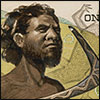
The New Theme for the 5 Dollars Banknotes
The Reserve Bank of Australia (RBA) unveiled the theme for the new $5 banknote, which features First Nations peoples, replacing the portrait of Queen Elizabeth II.
By AG | Monday, March 17, 2025
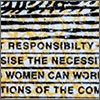
50 dollars - Spelling Error and Mistake
The 2018 $50 banknotes printed contain a spelling error in the microprinted excerpt of Edith Cowan's maiden parliamentary speech. The error has been corrected from 2019. The word responsibility is incorrectly spelled responsibilty without the third i on three different places on the banknote.
By CAA | Friday, February 9, 2024

Plate Identification Letter Locations on Australian Banknotes
A Plate Identification Letter (PIL) is a very small letter found on each note of nearly all Paper Decimal notes issued. Although initially thought to be a security device, it seems tenable now that they were included to assist with quality control.
By AG | Sunday, September 17, 2023

Australian banknotes post-production defects visual references
Australian banknotes pictures showing examples of post-production defects.
By CAA | Wednesday, May 3, 2023

Banknote Anatomy
Like many other specialized hobbies, it's important to learn basic collecting banknotes terminology, including the parts of a note. You can find more definitions in the glossary.
By CAA | Tuesday, February 14, 2023

Queen Elizabeth II removed from the 5 dollars notes
On February 1, 2023, the Reseve Bank of Australia announced that King Charles III will not replace Queen Elizabeth II on the new $5 banknote. The Reserve Bank has decided to update the $5 banknote to feature a new design that honours the culture and history of the First Australians.
By CAA | Thursday, February 2, 2023
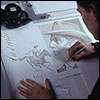
How are Australia's currency notes made?
Creating a new note is a complex and demanding task which seeks to marry different and often conflicting objectives. A note is primarily a security document, not just a work of art, but a blend of the two is sought. Long lead times are also frequently involved in the design and production of new notes. Traditionally, portraits and national symbols have been used as major design elements. Experience has shown that the public can more easily detect faults in counterfeit notes when these are part of the design.
By Reserve Bank of Australia | Thursday, April 21, 2022
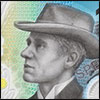
Australians on our Notes
$10 - AB 'Banjo' Paterson, Dame Mary Gilmore. $20 - Mary Reibey, Reverend John Flynn. $50 - David Unaipon, Edith Cowan. $100- Dame Nellie Melba, Sir John Monash.
By Reserve Bank of Australia | Sunday, April 17, 2022
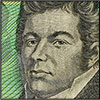
How much my Australian decimal banknote is worth?
This simple guide will help to determine the value of any decimal (1966+) banknote. First, there are several factors that influence the value of any Australian banknote.
By CAA | Sunday, July 11, 2021
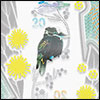
The Next Generation of Banknotes: 2016 onwards
This section presents the next generation of Australian banknotes, and provides insight into its production, design and security features. Like their predecessors, the new banknotes are printed on polymer, a type of plastic. They retain key aspects of the previous series-the people portrayed, colour palette, size and denomination-but incorporate new security features and designs.
By Reserve Bank of Australia | Thursday, June 3, 2021
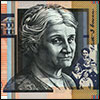
The First Series of Polymer banknotes: 1992 onwards
The trial of the polymer note technology following the bicentennial commemorative banknote was judged a great success. A complete series of polymer banknotes from $5 to $100 was issued from 1992 onwards.
By Reserve Bank of Australia | Tuesday, June 1, 2021
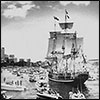
Introducing Polymer Banknotes: 1988
Australia's banknotes were transformed in this period. They were made using an innovative polymer (or 'plastic') base and were substantially redesigned. By the centenary of Federation, Australia had an internationally unique set of banknotes based on homegrown technology and skills.
By Reserve Bank of Australia | Tuesday, June 1, 2021
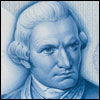
The Reserve Bank and Reform of the Currency: 1960-1988
The Reserve Bank was established and decimal currency introduced. A distinctively Australian series of banknotes was issued which captured Australia's emerging social and cultural diversity and its contribution to the wider world.
By Reserve Bank of Australia | Friday, May 28, 2021
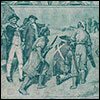
The Commonwealth Bank and the Note Issue: 1920-1960
The Reserve Bank of Australia displays showcase the sorts of money used before Federation and each of the series of banknotes since, culminating in the current polymer banknotes. This fascinating story is illustrated through a number of stages.
By Reserve Bank of Australia | Friday, May 28, 2021
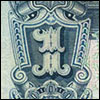
A New Currency: 1900-1920
From 1901 the Commonwealth Government had constitutional power over currency matters and was keen to have a nationally acceptable currency. >Legislation for an Australian currency was eventually enacted in 1910 and, in 1911, a government-owned bank - the Commonwealth Bank and forerunner to the Reserve Bank - was founded.
By Reserve Bank of Australia | Thursday, May 27, 2021
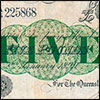
Before Federation: To 1900
Aboriginal trade was based on exchange, and did not involve the use of currency. Due to a lack of a suitable currency, barter (as well as other forms of currencies) was used following British colonisation.
By Reserve Bank of Australia | Wednesday, May 26, 2021
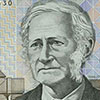
Portraits on decimal banknotes
Find the people behind the faces on Australian pre-decimal and decimal banknotes.
By CAA | Sunday, April 25, 2021

Rarest and most valuable Australian decimal banknotes
Decimalisation presented major logistical challenges for the new banknotes. They had to be finalized for 1966. An important feature of the new currency was that its notes would be entirely produced in Australia by Australian organizations. The $1 bill replaced the 10-shilling note. However, the overall look and feel of the notes was radically different to anything Australians had seen before. Here are the rarest and most valuable decimal banknotes produced in Australia.
By CAA | Tuesday, January 5, 2021
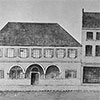
Defining moments: First bank in Australia
As a penal settlement, the colony of New South Wales was intended to be economically self-sufficient but as the colony developed, it became apparent that formal financial institutions were needed to promote growth. In April 1817 Australia's first bank, the Bank of New South Wales (now Westpac), opened in Sydney.
By National Museum Australia | Wednesday, April 22, 2020
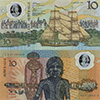
Commemorative 10 dollars 1988 bicentennial banknote
On January 27, 1988, the Reserve Bank of Australia released for the first time the commemorative 10 dollars 1988 banknote. It was developped by the Reserve Bank of Australia, The University of Australia and the Commonwealth Scientific and Industrial Research Organisation to enhance the security of australian currency and it was the first modern polymer banknote issued worldwide.
By CAA | Monday, January 6, 2020
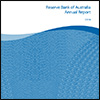
Reserve Bank of Australia 2019 Banknotes Report
The Reserve Bank is responsible for producing and issuing Australia's banknotes. The Bank seeks to ensure that banknotes in circulation are of high quality and in sufficient volume to meet public demand. Australia has one of the safest and most secure currencies in the world, as reflected in the low level of counterfeiting it experiences. To ensure that this continues to be the case, the Bank researches anti-counterfeiting technologies and developments in banknote design. Based on this work, the Bank has been undertaking a major upgrade of Australia's banknotes, incorporating innovative new security features. Arrangements for storage and distribution of Australia's banknotes have also been upgraded in recent years to allow the Bank readily and cost-effectively to accommodate changing patterns in the demand for banknotes in the community.
By Reserve Bank of Australia | Thursday, October 17, 2019

Australia's first banknotes
Australia's first banknote was stamped with its serial number at a ceremony on 1 May 1913 – one of several nation-building events at which Prime Minister Andrew Fisher officiated in the lead-up to the election on 31 May. Fisher presented the first three 10-shilling notes to the Governor-General, Lord Denman, his daughter Judith, who numbered the first note, and son Thomas.
By National Museum Australia | Sunday, November 4, 2018
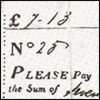
Paper Money in Early New South Wales
In the first few years of the newly founded colony of New South Wales, the need for money as a medium of exchange was not great. Survival was foremost in the minds of the the administrators, the soldiers of the New South Wales Corps and the convicts. Drought, food shortages, a lack of accommodation and the challenge of adapting to a new land and climate were far more important than any concerns about a minor nuisance such as a lack of ready money.
By AG | Tuesday, September 13, 2011

Federal Currency Note Competition
On 5th November, 1910, a competition to design Australia's first Commonwealth Notes was announced in the Commonwealth of Australia Gazette. Prizemoney of £50 each was offered to the winning designers of a 10/-, £1 and £5 note.
By AG | Sunday, January 30, 2011

Grading Banknotes
Five characteristics are examined to accurately determine the state of preservation of a banknote. They are the state of cleanliness, the severity of folding, the state of the surface, the state of the edges and the severity and number of any punctures or pinholes on the note.
By AG | Sunday, January 30, 2011

Tasmanian (Van Diemen's Land) Promissory Notes
In Tasmania (then Van Diemen's Land), Lieutenant Governor Collins faced a similar problem to the one that Phillip had faced during the early days of settlement - a severe shortage of coins and banknotes. The result was a proliferation of private promissory note issues.
By AG | Saturday, November 27, 2010
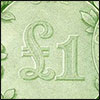
Pre-Decimal Banknotes
Before 1910, the issue of banknotes had been in the hands of approximately fifty private banks for a period of over 90 years. Mergers, absorptions and failures had reduced the number of issuing banks significantly by the beginning of the 20th century, particularly as a result of a financial crisis which occurred in 1893.
By AG | Monday, September 15, 2003

Australian Superscribed Banknotes 1910 to 1914
The Australian Government assumed responsibility for banknote issues in 1910. In the four years until 1914, notes from 17 institutions (16 banks and the Queensland Government) were purchased and overprinted with a promise by the Commonwealth Treasury to redeem the value of the note in gold.The superscription was signed by Jas R. Collins, Accountant and Geo. T. Allen, Secretary to the Treasury and dated 1st December, 1910.
By AG | Sunday, July 6, 2003



